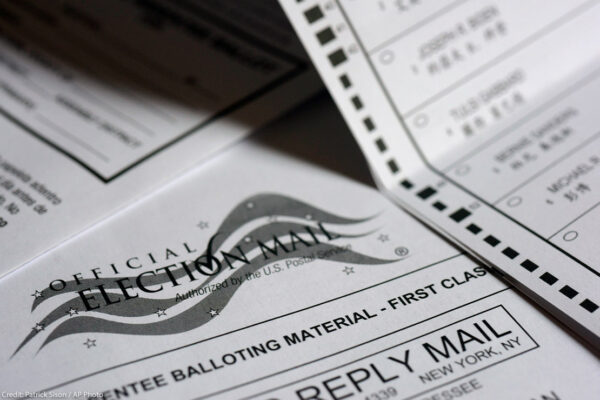The first time I voted was in 1968. As a blind man, I needed the assistance of a poll worker to cast my ballot. I’ll never forget the moment the poll worker looked at my ballot and said loudly, for everybody to hear, “You want to vote for who?”
The poll worker’s comment left me shocked, embarrassed, and wondering whether she marked the ballot the way I wanted. Years later, I would ask my wife to mark my ballot. She would joke with me, “I know you love me, but now I know you really trust me.” I knew my wife would mark my ballot the right way.
I’m lucky to have the help of someone I trust, but I shouldn’t need to rely on somebody else to exercise my constitutional right to vote. People with disabilities have the same legal right to a private, independent vote as anybody else. By forcing people with disabilities to compromise these rights, election officials are disenfranchising us and sending the message that our votes don’t matter — and breaking the law.
In the 50 years since I cast my first vote, there has been some progress in increasing accessibility for people with disabilities, due to reforms included in the Americans with Disabilities Act and the Help America Vote Act, which aim to ensure accessibility. But our voting system will never be truly accessible until people with disabilities can vote without the assistance of another person, and without compromising their right to privacy. Unfortunately, that’s still not the case for the 35 million-plus eligible voters with disabilities, who face barriers that vary from state to state.
Here’s how I vote today as a Washington, D.C. resident: I request my ballot online and mark it electronically, using my screen reader. Then I must print the ballot, stamp it, and put it in the mail. The last part is feasible for me, but it may not be feasible for someone with paralysis or another disability that impedes mobility, or for someone without the financial means for a printer or computer. Due to hurdles like these, many people have to rely on a family member, poll worker, or even a stranger to cast their vote.
Expanding access to vote by mail has been a major step toward accessibility because it allows people with disabilities to avoid the challenges of getting to the polls, waiting in line, and facing physical barriers at a polling place. It should also be an option for all voters, especially due to the dangers posed by in-person voting during the COVID-19 pandemic. But for true accessibility, people with disabilities who vote by mail must be able to mark, verify, and cast their ballots privately and independently.
We should also have the choice to vote in person. In fact, voting in person can be the more accessible option for some voters, such as those with print disabilities. But it’s still far from being truly accessible. Too many times, I’ve encountered poll workers that don’t know how to operate accessible machines, even when they are available. This makes the process of voting take much longer than necessary. I don’t want to have to hold up a whole line of voters just because the poll worker isn’t properly trained on how to use a machine. I want to vote efficiently, and in secret.
Voting is one of our oldest, foundational rights, but voting laws are constantly changing. In some cases, it’s for the better. For example, a dozen states have expanded access to vote by mail for some elections this year. But there’s still more work to be done to make sure the right to vote applies to everyone, including people with disabilities.
Jim Dickson, President of the Aid Association of the Blind of the District of Columbia

